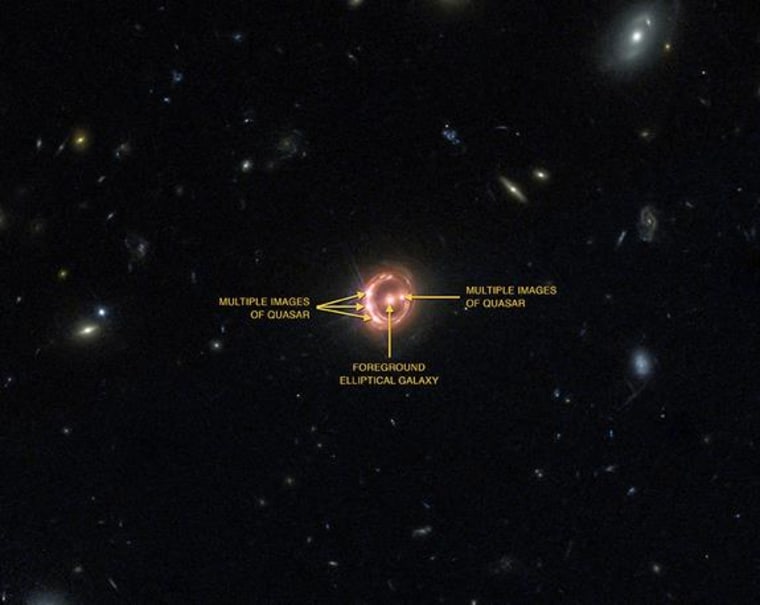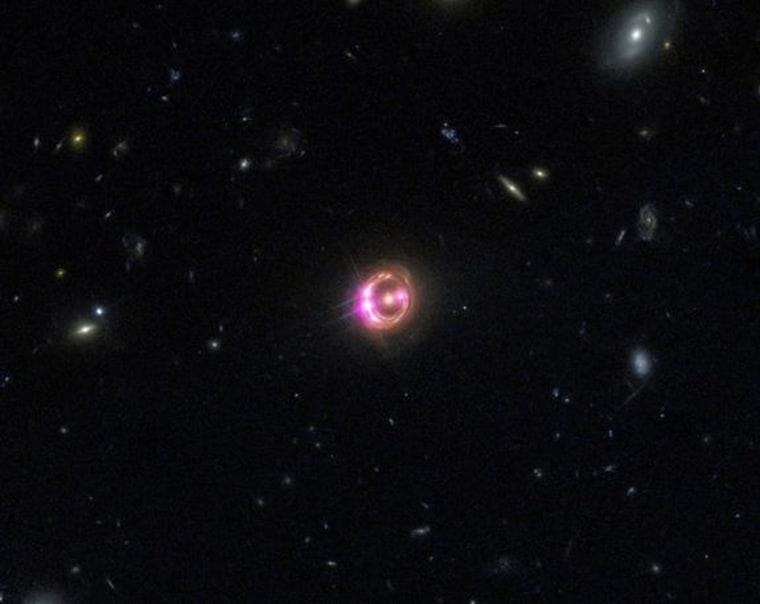For the first time, astronomers have directly measured how fast a black hole spins, clocking its rotation at nearly half the speed of light.
The distant supermassive black hole would ordinarily be too faint to measure, but a rare lineup with a massive elliptical galaxy created a natural telescope known as a gravitational lens that allowed scientists to study the faraway object.
"It acts like a telescope, but a free one provided by nature," study co-author Mark Reynolds of the University of Michigan told Space.com via email.
In the new study, a team led by Rubens Reis of the University of Michigan used NASA's Chandra X-ray Observatory and the European Space Agency's XMM-Newton — the largest X-ray space telescopes currently available — to observe the X-rays generated in the innermost regions of the disk of material circling and feeding the supermassive black hole that powers the quasar J1131.

Measuring the radius of the disk allowed the astronomers to calculate the black hole's spin speed, which was almost half the speed of light.
The quick spin of J1131 indicates that the black hole is being fed by a bountiful supply of gas and dust. These large volumes could be provided by collisions and mergers between galaxies, among other sources, Reynolds said.
A slower spin and more haphazard feeding process would be caused by material arriving in spurts, from interstellar gas clouds and stars wandering too close from a variety of directions.
"Observational studies over the past 20 years have shown a clear link between the mass of the supermassive black hole at the center of a galaxy and the properties of the galaxy in which it resides," Reynolds said. "These relations suggest a symbiotic relationship between the central black hole and its host galaxy."
- Nola Taylor Redd, SPACE.com
This is a condensed version of a report from Space.com. Read the full story. Follow us @Spacedotcom, Facebook or Google+.
- Images: Black Holes of the Universe
- Black Hole - It Is What It Ate | Video
- Black Hole Quiz: How Well Do You Know Nature's Weirdest Creations?
Copyright 2014 SPACE.com, a TechMediaNetwork company. All rights reserved. This material may not be published, broadcast, rewritten or redistributed.
